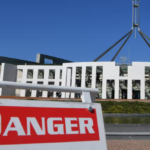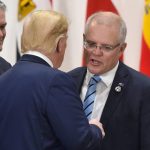Questions remain over electric vehicles

The recent National electric vehicles summit in Canberra focused on Australia’s electric vehicle future and what can be done to increase uptake and reduce costs.
Tax breaks and subsidies, fiddling with fuel and emission standards are high on the electric vehicles promoters’ agenda. Let’s hope that in the scramble for the driver’s seat, somebody thought to bring a roadmap.
Moving to electric vehicles is not as simple as some wish to believe. Friction between competing sectors for electricity is sure to put upward pressure on prices.
In view of the following points, Australian governments must urgently develop an integrated plan to match electricity supply to an increasing demand for electric vehicles.
Road transport in Australia accounts for nearly 25% of total energy consumption. That is about the same amount of energy as 29 Hazelwood power stations running flat out 24/7.
In 2021, all of the electricity generated in Australia could have supplied only about 2-thirds of the road transport energy demand, leaving no power for households and industry. In other words, 50% more electricity would have been needed to match the road transport demand if it had been fully electrified.
In 2021, renewable electricity supply was just over 1% of the hypothetical (fully electrified) road transport energy demand.
Did the electric vehicles summit fact check the claim that Canberra’s electricity supply is 100% renewable? In fact, most of that city’s power is imported from various sources.
Businesses and individuals who can’t afford electric vehicles or must use alternative fuels will be commercially disadvantaged. How will government compensate for the economic distortions that will result if some electric vehicles batteries can be recharged at no cost to the electric vehicle’s owner?
How will government collect revenue from electric vehicle owners to pay for roads and other infrastructure? The High Court of Australia will soon decide if states can impose what amounts to a tax on EVs for the electricity they consume. The failure of the Commonwealth to tax EVs as they do with fossil fuels used by other vehicles is further evidence of political interests being placed ahead of sound policy.
Will car makers and recharge facilities have to use standard connectors that show the electricity is being used for vehicle recharging?
Will car makers be required to accurately disclose battery components and label them to enable safe and efficient recycling?
What can be done to reduce fire, chemical exposure, electric shock and explosion hazards that will confront first responders and emergency services at crashes involving electric vehicles?
Were insurers represented at the summit? What effect will electric vehicle technology have on risk and premiums generally?
At present electric vehicle mania looks like a classic case of putting the cart in front of the horse. And when there’s much excitement about the destination without knowing how to get there, it’s easy to end up on the wrong track.

Max Thomas, Dip. Agric. (retired) worked in the public sector and in private consulting on a range of land, water and waste management projects. He prepared guidelines for irrigation with recycled water for EPA Victoria and developed a number of Environmental Management Systems in the water industry.












